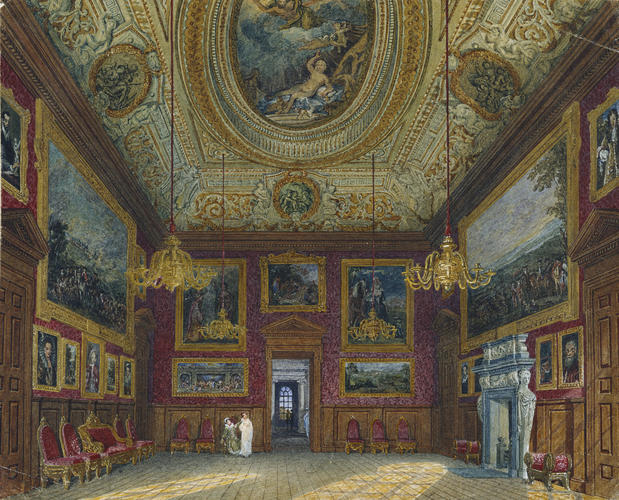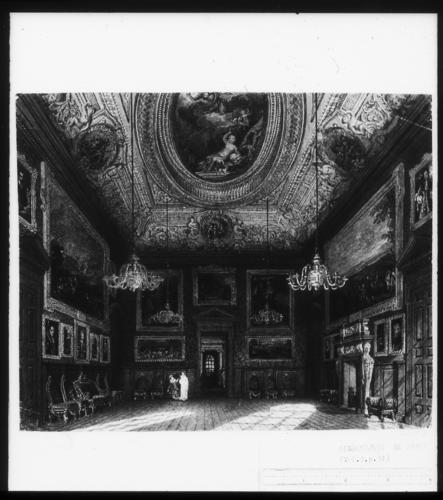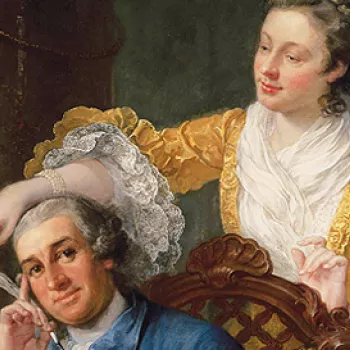Kensington Palace: The King's Great Drawing Room c.1816
Pen and ink with watercolour and bodycolour, over pencil | 19.8 x 24.6 cm (sheet of paper) | RCIN 922157
-
A watercolour of the Great Drawing Room at Kensington Palace, prepared for one of the plates in William Henry Pyne's 'History of the Royal Residences'. This was the second space William Kent decorated for George I. The combination of crimson wall-hangings and gilt-wood picture frames delivered to Kent's own designs soon became very fashionable. At its centre, Kent adorned the ceiling with a scene of the tragic liaison between Jupiter, king of the gods, and his mortal lover Semele.
The paintings in this image can be identified from the 1818 inventory of Kensington Palace; the three overdoors are Leandro Bassano’s portrait of Tiziano Aspetti (left, 405988), Huysmans’s Duchess of Richmond (right, 405876) and Spierincx’s Venus (centre, 405568). On the wall facing us to the left, a large full-length multi-figure image (no longer in the collection) would seem to be Martin’s large canvas (10ft 6in x 9ft 6in) of ‘The Arts Crowning a Bust of His majesty a “Design for a Transparency”’ listed in Kensington in 1818 (no 410). Van Somer’s famous image of Anne of Denmark with her hunting dogs hangs opposite to the right (405887). The former painting hangs over Verrio’s Christ healing the Sick (404052); the latter over Van der Meulen’s Siege of Tournay (403937).
Facing each other on the two side walls are John Wootton’s great siege views, that of Lille on the left (407182 and Tournay on the right (407184). The first hangs over five small paintings, an Italian Lady with a Ruff (far left, 406132), a pair of Zuccarelli mythological landscapes, Diana (left, 401275) and Europa (right, 401274), framing Quiter’s portrait of the Landgrave of Hesse-Kassel as a boy (centre, 405051); a Flemish Lady with a ruff (far right, 402850) completes the row.
The four below Wotton’s siege of Tournay are an anonymous Man (406143), one concealed by the mantle, and, to its right, an unidentified head and Tintoretto’s Marco Grimani (402747).Provenance
Made for William Henry Pyne's 'History of the Royal Residences', probably acquired by George IV
-
Creator(s)
Acquirer(s)
-
Medium and techniques
Pen and ink with watercolour and bodycolour, over pencil
Measurements
19.8 x 24.6 cm (sheet of paper)
Other number(s)
RL 22157










